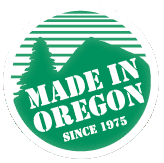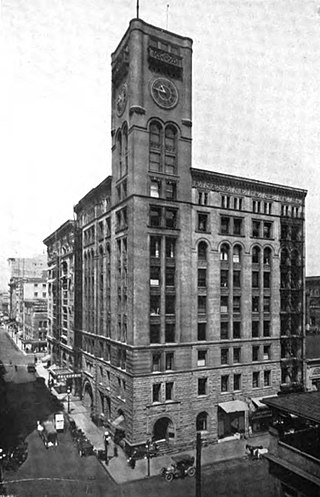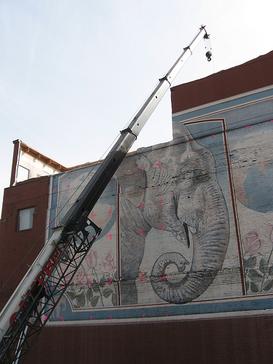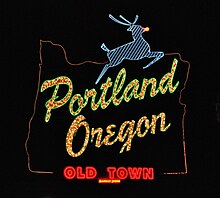
The Portland Trail Blazers are an American professional basketball team based in Portland, Oregon. The Trail Blazers compete in the National Basketball Association (NBA) as a member of the Northwest Division of the Western Conference. The team played its home games in the Memorial Coliseum before moving to the Moda Center in 1995. The franchise entered the league as an expansion team in 1970, and has enjoyed a strong following: from 1977 through 1995, the team sold out 814 consecutive home games, the longest such streak in American major professional sports at the time, and which has only since been surpassed by the Boston Red Sox and the Dallas Mavericks. The Trail Blazers are the only NBA team based in the Pacific Northwest, after the Vancouver Grizzlies relocated to Memphis and became the Memphis Grizzlies in 2001 and the Seattle SuperSonics relocated to Oklahoma City and became the Oklahoma City Thunder in 2008.

Portland Union Station is a train station in Portland, Oregon, United States, situated near the western shore of the Willamette River in Old Town Chinatown. It serves as an intermediate stop for Amtrak's Cascades and Coast Starlight routes and, along with King Street Station in Seattle, is one of two western termini of the Empire Builder. The station is a major transport hub for the Portland metropolitan area with connections to MAX Light Rail, the Portland Streetcar, and local and intercity bus services. The station building contains Wilf's Restaurant & Bar on the ground level and offices on the upper floors. It also has Amtrak's first Metropolitan Lounge on the West Coast, which is reserved for first-class sleeping car and business-class passengers.

KOPB-TV is a PBS member television station in Portland, Oregon, United States, owned by Oregon Public Broadcasting. The station's transmitter is located in the city's Sylvan-Highlands section.

The Arlene Schnitzer Concert Hall is a historic theater building and performing arts center in Portland, Oregon, United States. Part of the Portland Center for the Performing Arts, it is home to the Oregon Symphony, Portland Youth Philharmonic, Metropolitan Youth Symphony, White Bird Dance Company, and Portland Arts & Lectures. It is also a concert and film venue. Originally the Paramount Theatre, it is also locally nicknamed "The Schnitz".

Old Town Chinatown is the official Chinatown of the northwest section of Portland, Oregon. The Willamette River forms its eastern boundary, separating it from the Lloyd District and the Kerns and Buckman neighborhoods. It includes the Portland Skidmore/Old Town Historic District and the Portland New Chinatown/Japantown Historic District, which are listed on the National Register of Historic Places. It has been referred to as the "skid row" of Portland.

Olds, Wortman & King, also known as Olds & King, was a department store in Portland, Oregon, United States, established under a different name in 1851 and becoming Olds & King in 1878, on its third change of ownership. The store was renamed Olds, Wortman & King in 1901; Olds & King again in 1944; and Rhodes in 1960. Moving several times within the downtown Portland area, the store settled at 10th & Morrison in 1910, in a large new building that remained in operation as a department store until 1974 and is now listed on the National Register of Historic Places. Since 1976, the building has been known as The Galleria.

Washington High School was a high school in Portland, Oregon, United States, from 1906 to 1981. After fire destroyed the original building, a new building was completed in 1924. The school merged with Monroe High School in 1978 to become Washington-Monroe High School. The school closed shortly after in 1981. A few years later it was used as the Children's Services Center, a multipurpose social service facility that also provided day care and other programs for at risk youth. After that the building was vacant for many years. It was also used for a time as a location for administrative offices for the Portland Public Schools.

Made in Oregon is a private company founded in Portland, Oregon, United States in 1975 by Portland businessman Sam Naito. The company is a gift retailer that specializes in Oregon-made products. It was originally owned by Norcrest China Company, an import business co-owned by Sam Naito and his brother Bill Naito, until Norcrest was reorganized as H. Naito Corporation in 1992.
White Stag is an in-store brand of women's clothing and accessories sold by Walmart. Founded as a skiwear manufacturer in Portland, Oregon, the company was purchased by the Warnaco Group in 1966, which in turn sold the brand to Wal-Mart in 2003.

William Sumio Naito was an American businessman, civic leader and philanthropist in Portland, Oregon, U.S. He was an enthusiastic advocate for investment in downtown Portland, both private and public, and is widely credited for helping to reverse a decline in the area in the 1970s through acquiring and renovating derelict or aging buildings and encouraging others to invest in downtown and the central city.

Montgomery Park is an office building and former Montgomery Ward mail-order catalog warehouse and department store located in Portland, Oregon, United States, built in 1920. It is listed on the National Register of Historic Places under its historic name Montgomery Ward & Company Building. The building is located on property once used for the Lewis and Clark Centennial Exposition, of 1905. It was occupied by Montgomery Ward from 1920 until 1985, although the majority of the company's operations at this location ended in 1982. After the U.S. Bancorp Tower and the Wells Fargo Center, the building is the third-largest office building in Portland with 756,055 square feet (70,239.8 m2).

The Holt–Saylor–Liberto House is a house located in southwest Portland, Oregon, that is listed on the National Register of Historic Places. It was added to the register in 1978. Earlier, it was designated a Portland Historic Landmark by the city's Historic Landmarks Commission, in October 1977.

The Merchant Hotel, also known as the Merchants' Hotel, is a historic former hotel building in Portland, Oregon, United States. It is located at 121 N.W. Second Avenue in Old Town Chinatown. It is a contributing property in the Portland Skidmore/Old Town Historic District, which was listed on the U.S. National Register of Historic Places in 1975 and designated a National Historic Landmark District in 1977. It is one of the few remaining examples of Victorian Italianate, cast iron architecture on the West Coast. It occupies half of a city block, specifically along the south side of N.W. Davis Street from Second to Third Avenues.

Mary's Club is the oldest strip club in Portland, Oregon, and among the oldest in the United States. In 1954, Roy Keller bought the business from Mary Duerst Hemming, who owned and operated Mary's as a piano bar beginning in the 1930s. Keller initially hired go-go dancers as entertainment during the piano player's breaks, later hiring them full-time because of their popularity. Topless dancers wearing pasties were introduced in 1955. The club also featured comics, musicians, singers and other acts. All-nude dancing began in 1985, after a judicial ruling against City of Portland ordinances banning it in venues which served alcohol.

The Oregonian Building was a building in downtown Portland, Oregon, United States, which served as the headquarters of Portland's major newspaper, The Oregonian, from 1892 to 1948. It was the first steel-framed building constructed in the Western U.S., and from its opening until 1911 it was the tallest building in Portland. In addition to the newspaper's offices and printing press, in 1922 the building became the home of Portland's first commercial radio station, KGW, which was owned by the Oregonian Publishing Company. A second radio station, KEX, was acquired by the paper in 1933, and joined KGW in new, shared studios in the Oregonian Building. A fire in 1943 forced the radio stations to relocate. The company sold the building in December 1947 as it prepared for a move to a larger building. In June 1948, the newspaper moved to a new building on Southwest Broadway, also called the Oregonian Building. The 1892 building with the landmark clock tower then stood vacant for about two years until it was demolished, in 1950.

New Copper Penny was a nightclub located at the intersection of Southeast 92nd Avenue and Foster Road in Portland's Lents neighborhood, in the U.S. state of Oregon.

The Packy mural was a public artwork depicting the elephant Packy, painted on the Skidmore Fountain Building in Portland, Oregon's Old Town Chinatown neighborhood. The artwork was designed by Eric Larsen and painted in 1990 by North Pacific Sign and Design, but was destroyed during the building's 2008 renovation to become the new headquarters for Mercy Corps.

The "Portland" sign is displayed on the exterior of Portland, Oregon's Arlene Schnitzer Concert Hall, in the United States.

Naito Parkway is a major thoroughfare of Portland in the U.S. state of Oregon. It was formerly known as Front Avenue and Front Street and was renamed in 1996 to honor Bill Naito. It runs between SW Barbur Boulevard and NW Front Avenue, and adjacent to Tom McCall Waterfront Park through Downtown Portland.

Pal's Shanty Tavern refers to a pair of dive bars in Portland, Oregon.
























